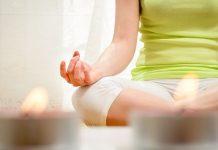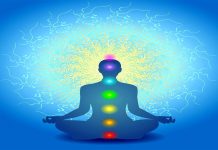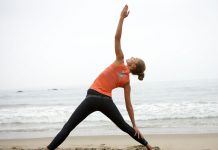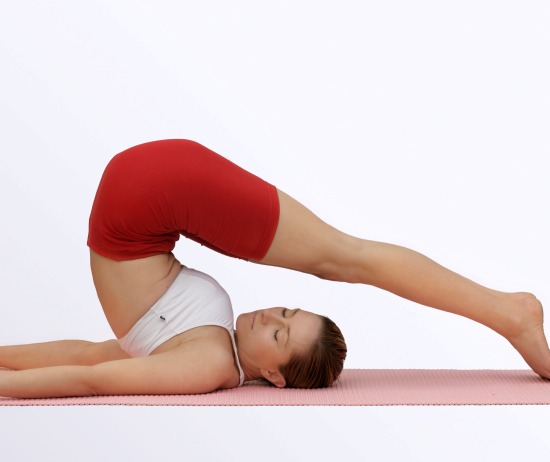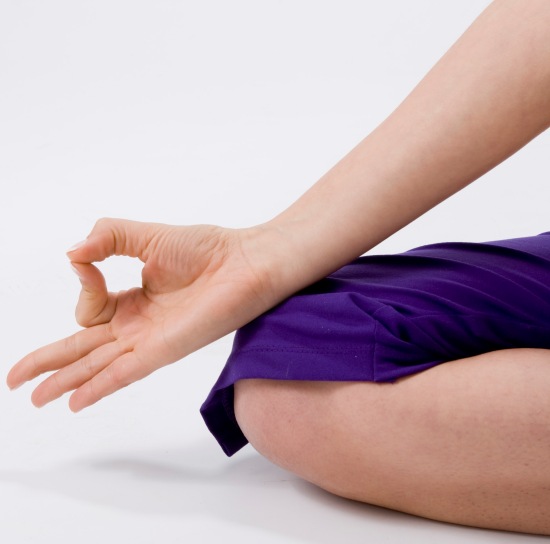Stress is a normal part of life that we all must face. The degree to which stress impacts our lives, however, depends on how we manage it. Ignoring stress or just “living with it” can lead to a host of health problems, including high blood pressure, anxiety, depression, insomnia and even obesity.
One way to manage stress on a regular basis is to practice restorative yoga. Restorative yoga poses help to relieve stress both physically and mentally.
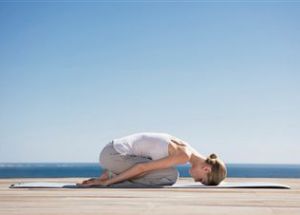 Before beginning any yoga session, it is important to find a quiet space where you can practice undisturbed.
Before beginning any yoga session, it is important to find a quiet space where you can practice undisturbed.
Always begin with a few moments of deep breathing and try to clear your mind of all distractions.
The following poses should be incorporated into your regular exercise routine at least once a week, but more often if needed.
CORPSE POSE
Corpse pose, also referred to as savasana, is the ultimate restorative pose. Easier said than done, it requires complete stillness and focus on the body.
Begin by lying flat on your back on the mat. Allow your legs to open about hip-width apart, and rest your arms at your sides with the palms facing upward.
Close your eyes and allow your breath to be deep, but relaxed. Consciously relax all the muscles in the body, beginning with your toes and working your way up to your head and scalp.
Clear your mind and focus only on your body and the sound of your breath. Stay in corpse pose for 5 to 10 minutes.
This pose helps to calm the mind, relax the body and relieve stress. It is used therapeutically to treat stress and anxiety, headaches, high blood pressure and depression.
LEGS-UP-THE-WALL POSE
Legs-up-the-wall pose is called viparita karani in Sanskrit. It is excellent for stress that results in low back and hip pain.
For this pose you will need a small pillow or folded blanket. Bring your mat up against an open wall. Place the pillow or blanket on the mat in front of the wall. Move your hips onto the pillow or blanket. Next, while lying flat on your back, extend your legs vertically up the wall.
Allow your arms to extend out to the sides of your body, palms facing upward. Close your eyes and just relax. Allow your breathing to be deep and smooth. Stay in viparita karani for 5 to 10 minutes, or as long as you like.
This pose helps relieve tension and pain in the hips and low back. It is used therapeutically for sciatica, arthritis, headaches, leg cramps, insomnia and mild depression.
RECLINING COBLER’S POSE
Suptabaddhakonasana, also known as reclining bound angle pose, or reclining cobler’s pose, is a restorative pose specifically for stress caused by grief and anger. The process of opening the legs and stretching the groin muscles may help alleviate emotional stress and help to let go of grudges and other negative feelings.
This pose also uses props. You will need two small sofa pillows for extra support. Lie flat on your back on the mat. Place a sofa pillow on the outside of each thigh.
Inhale and bend the knees, bringing the feet into toward the groin. Exhale and open the knees out to the side, allowing the legs to completely relax, resting gently on the pillows.
Keep the hands relaxed at your sides, with your palms facing upwards. Close your eyes and just relax. Let go of all thoughts, stresses and worries. Allow your breath to be deep and steady. Remain in reclining cobler’s pose for 1 to 2 minutes or longer if it is comfortable.
CHILD’S POSE
Child’s pose, or balasana, is a resting pose this is commonly used throughout a yoga session. It may also be used as a restorative pose anytime you feel the need to take a “mental” break.
Come to the floor in a kneeling position. Inhale and reach up overhead. Exhale and reach forward onto the floor, allowing the hands to rest on the mat.
Keep your arms either stretched out in front of the body, or resting comfortably at your sides, whichever is more relaxing. Breathing deeply may be challenging in this folded position, but try to keep your breath steady and calm.
Mentally let go of all thoughts and worries. Remain in child’s pose for 1 to 2 minutes or longer if necessary.
Child’s pose in restorative yoga is used therapeutically to calm the mind and relieve stress and anxiety. It also helps to gently stretch the body and massage the internal organs.



